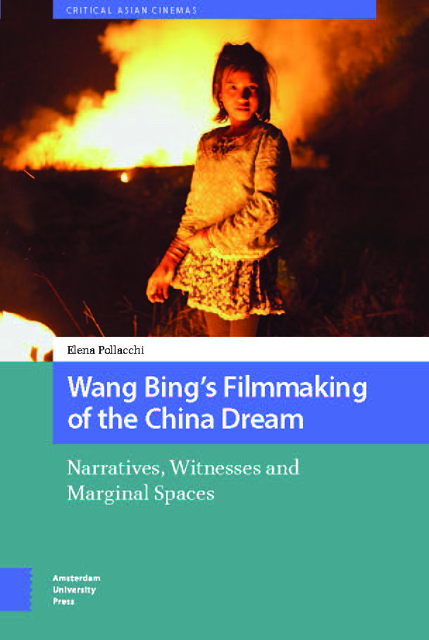Book contents
- Frontmatter
- Dedication
- Table of Contents
- Acknowledgements
- Editorial Note
- Foreword
- Introduction
- 1 Wang Bing’s Cinematic Journey: A Counter-Narrative of the China Dream
- 2 History in the Making: The Debut Epic Tiexi qu: West of the Tracks
- 3 Spaces of Labour: Three Sisters, ’Til Madness Do Us Part, Bitter Money
- 4 Spaces of History and Memory: The Works on the Anti-Rightist Campaign
- 5 Collective Spaces – Individual Narratives
- 6 Concluding Remarks: Spaces of Exhibition and Spaces of Human Practice
- Filmography
- Bibliography
- Index
Foreword
Published online by Cambridge University Press: 12 January 2023
- Frontmatter
- Dedication
- Table of Contents
- Acknowledgements
- Editorial Note
- Foreword
- Introduction
- 1 Wang Bing’s Cinematic Journey: A Counter-Narrative of the China Dream
- 2 History in the Making: The Debut Epic Tiexi qu: West of the Tracks
- 3 Spaces of Labour: Three Sisters, ’Til Madness Do Us Part, Bitter Money
- 4 Spaces of History and Memory: The Works on the Anti-Rightist Campaign
- 5 Collective Spaces – Individual Narratives
- 6 Concluding Remarks: Spaces of Exhibition and Spaces of Human Practice
- Filmography
- Bibliography
- Index
Summary
Just over fifty years have passed since François Truffaut encapsulated, in an evocative image, the prevailing presumption of contemporary theoretical reflection on film history and criticism. According to this presumption, film history could essentially be traced back to two main currents, harking back to the two different approaches of the Seventh Art’s pioneers: on the one hand the ‘ontological’ realism of the Lumière Brothers – progenitors of documentary cinema; on the other hand, the spectacular inventiveness of George Meliès – progenitor of narrative and fictional cinema.
Truffaut described these two currents as vast rivers originating from the same source but flowing in parallel and with little chance of intertwining and even less of converging. Such a divide seemed to be confirmed by the attitude of an audience that was passively accustomed to giving diverging receptions to works belonging to these two diverse currents. Moreover, the production system, and the filmmakers too, considered documentary and fiction film as two neatly separate types of cinema, with a qualitatively different impact on the collective imaginary. Accordingly, this presumption continued to govern the prevalent approach of viewers, critics, producers, and film directors at least until the end of the twentieth century. Thus, it persisted until the deep formal and aesthetic transformations that characterize contemporary cinema finally dismissed the strict divide that had previously defined the semantic spectrum of each term – documentary and fiction – and embraced a more sophisticated articulation frame. Albeit without entering into detailed analyses of individual works and experimentations with film language that contributed to the convergence of these traditionally separate approaches, the proliferation of more sophisticated and complex expressive modes – now for all to see – is indebted to the mutual interaction of these two for long distinct worlds.
On the one hand, ‘fiction film’ has progressively adopted ways of representing the pro-filmic event that are part of the most advanced experiences of the ‘cinema of the real’; on the other hand, the line of cinema that is conventionally and persistently called ‘documentary’ has increasingly developed a more conscious use of its own cinematic language. Going beyond traditional understandings of the ‘realistic’ image, the latter, too, has appropriated stylistic and narrative features that have long been the privilege of fiction film.
- Type
- Chapter
- Information
- Wang Bing's Filmmaking of the China DreamNarratives, Witnesses and Marginal Spaces, pp. 13 - 18Publisher: Amsterdam University PressPrint publication year: 2021



